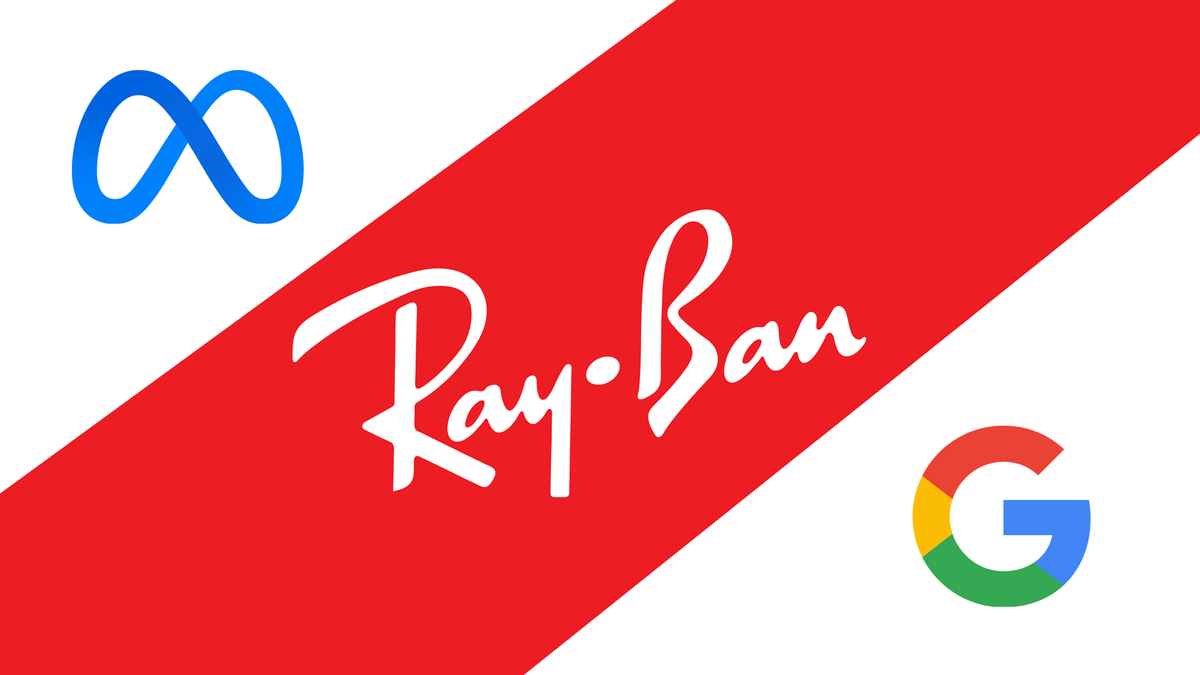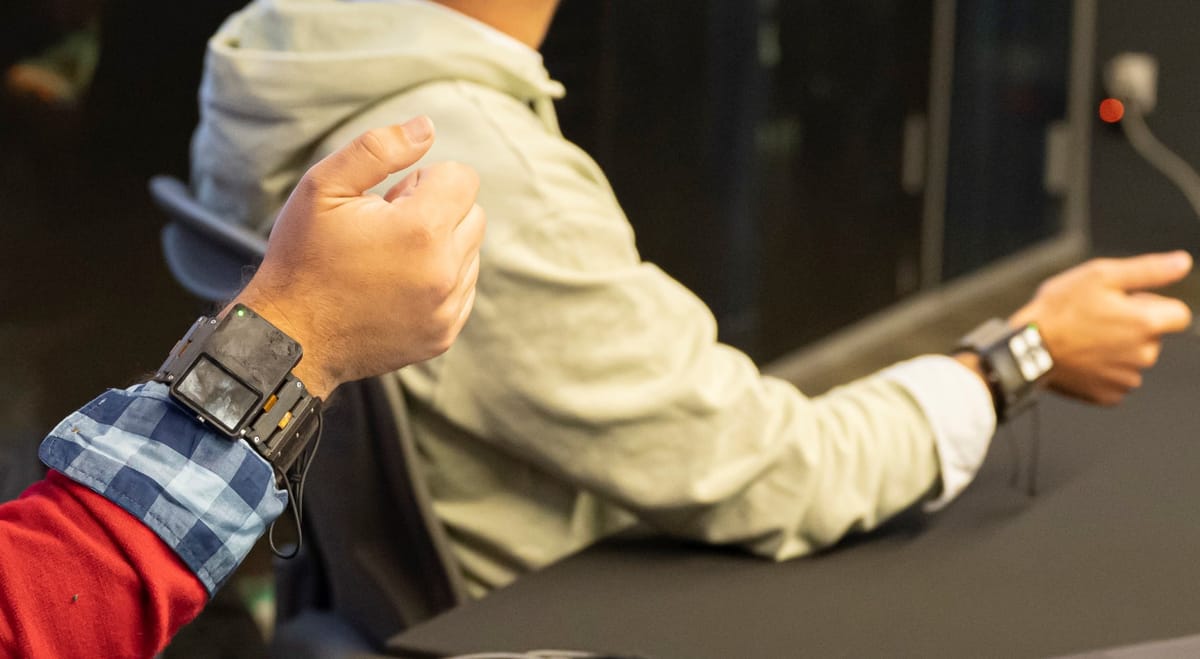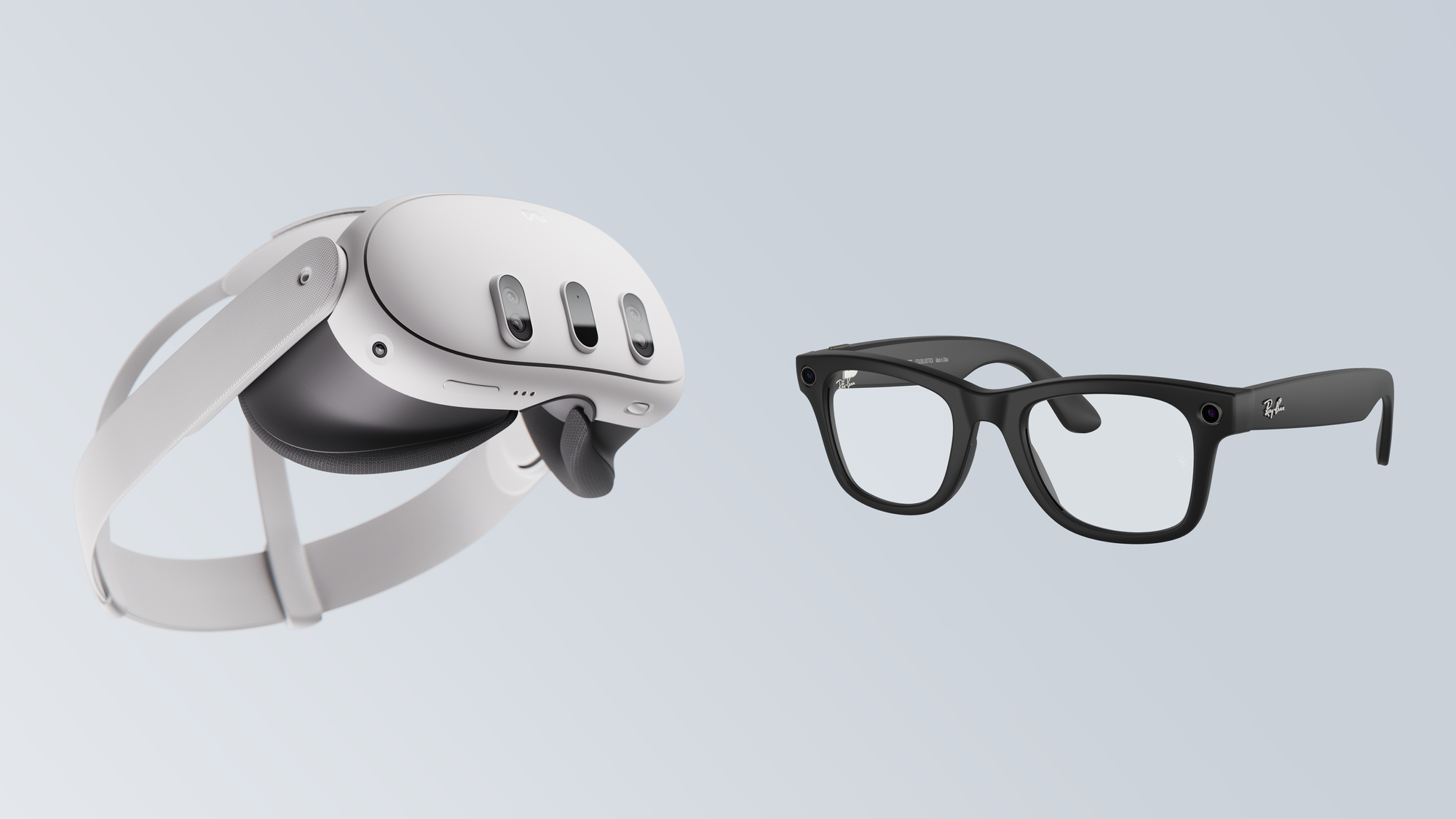Quest 3 can pair to the Meta Ray-Ban glasses to privately download videos and photos anywhere.
In 2014, Mark Zuckerberg spent $3 billion for Oculus VR and $19 billion for WhatsApp. A decade later, you can take Meta’s glasses out into the world and capture photos and videos with them up to three minutes at a time. While they’re charging in their case, you can pull out your VR headset to download those videos and share whichever ones you want with friends on WhatsApp. I successfully tested this.
The $22 billion Zuckerberg spent to acquire those companies was just the start of his investment in making this future. He then needed to spend an additional $100 billion or more over the last decade building core technologies to enable a new kind of digital nomad. Now, Zuckerberg is faced with spending tens of billions of dollars more to secure this future.

Digital Nomads Without Phones Or Laptops
Long-term, we should expect services like music, calls and media transfer to hand off seamlessly from a pair of comfortable glasses to a powerful headset, and vice versa.
In this case, I successfully downloaded videos and photos from my Ray-Ban Meta glasses to the Meta View app running on the Quest 3 headset. Meta hasn’t built any file management tools yet, so this isn’t really useful, but the headset does offer a much bigger screen on which to view captured media than any phone.
Proving this pathway works starts to make Zuckerberg’s vision of the future a little clearer. Physical Androids and iPhones are currently best for running Meta View and managing Meta’s Ray-Ban glasses. Importantly, though, phones are technically optional hardware here. Yes, it is absurd running an app meant for a phone on a headset to download photos from glasses. In 2005, so was the idea that you’ll jump into cars driven by strangers who signed up for the job on their phone.
If you’ve ever imagined yourself a particularly nomadic person, follow me on a thought experiment as we consider the idea of leaving your laptop and phone at home and taking just glasses and headset for a long trip on foot, rail, or bus.
What would that look like?
Headset For Private Focus
Meta’s path for photos and videos from glasses to headset is arguably more private than it is on every other personal computing device ever made.
As Quest 3 is a VR headset, it produces light just for its wearer alone. It is an infinite canvas on which to display any amount of media for exactly one person. The idea that others can just glance over and see what you’re watching is alien to it. Over the course of a multi-city trip you could enjoy any number of books, movies, videos, songs or games using panels of sideloaded apps with media in folders on Quest 3, powered through it all through USB-C cords and battery packs. In a scenario where this is your only media device, the 512 GB model offers a small but workable amount of space to store content, media and apps to get you through without streaming.
Glasses For Public Capture
For those moments when you’re not in headset, glasses can capture a video of what you see up to three minutes at a time. This is where real-world travel planning gets really interesting.
Mark Zuckerberg is sailing across the ocean in his sunglasses and the Ray-Ban Meta account on Threads is showing off the idea that you can swipe between points of view at a concert with multiple captures.
I’ve filmed a cat walking its humans through Central Park.
0:00
I met a dog named Henry who yelped at me as I walked away. I miss him even now, but you can watch his video and we can both enjoy what a good little boy he is.
0:00
I captured a family of raccoons at dusk. There were the drummers in the subway station and the band on the train into Brooklyn. I wore the glasses to my wedding and at a concert to capture a clip of hundreds of phones turning on to capture videos from their shaky handheld perspectives in Madison Square Garden. And is that Natalie Portman in my New Year’s Day ice skating video?
0:00
That’s a lot of weird and interesting things to have seen and captured in such vivid detail from my time living in New York and pressing the capture button on the glasses in public. When I was in California, too, I used the glasses for work and encountered my first robot with them as I made myself its trolley problem.
0:00
In this hypothetical cross country journey without a phone or laptop, each bus change is an opportunity to put the headset in a bag and explore the host city while capturing the sights and exploring the area with the Meta glasses as a sort of notepad.
The next bus is the perfect time to download those videos and photos to the headset. If there’s Wi-Fi available at a cafe, hotel or on the bus itself, it’s entirely possible to send your views to friends and family on WhatsApp or Messenger directly from your Meta eyewear.
Horizon, Meet View
Phones are removed from this thought experiment for a couple reasons.
First, there are plenty of travelers without the budget or inclination to pay for data plans in multiple countries or a cellular subscription anywhere. Second, a phone’s vibrations and notifications are active distractions from whatever else you might be doing.
It is almost unimaginable to picture a nomad in the year 2024 without a cellular connection to keep them on the Internet at all times. Indeed, it is truly magical to be on a WhatsApp call with a phone relaying your view from glasses to a distant caller. While a cellular connection keeps you connected to the world around you almost all the time, severing that connection is also entirely freeing in a way some people haven’t experienced in decades. For Facebook, born in the perpetually online era of this century, that’s precisely where Meta’s greatest opportunity is.
We’ve gone more than 15 years from Apple’s visual voicemail making it easier to listen to your voice messages to an era in which cellular carriers have to mark spam calls before you pickup to triage the amount of misuse now embedded into this system of communication. All those notifications on your phone advertising services you don’t really want? Meta has an opportunity to make all that go away and that road trip I just described without iPhone or Android would free you from potentially hundreds of interruptions you don’t necessarily need that would flow into your phone over that trip.
In essence, forgoing the cellular connection in your handheld slab of glass effectively unsubscribes you from the 20th century’s core method of communication – phones – while letting you start fresh in a new era of wearables.
The year is 2024, yes, but by the end of the decade, people should be able travel the world with a cellular-capable wristband that connects to glasses with a headset in their bag to pull out for private media viewing and socialization online anywhere, and with anyone.

Meta built toward this for more than a decade and, while it was an uphill battle across Gear VR, Oculus Go and Rift, their work is bearing fruit in the Quest 3 and Ray-Bans. For the entrenched tech giants, they’ll have to reimagine everything they do from the perspective of someone who is more than ready to develop a new relationship with technology.
For Meta, glasses and headsets allow Zuckerberg to forge that new relationship with billions of people.






